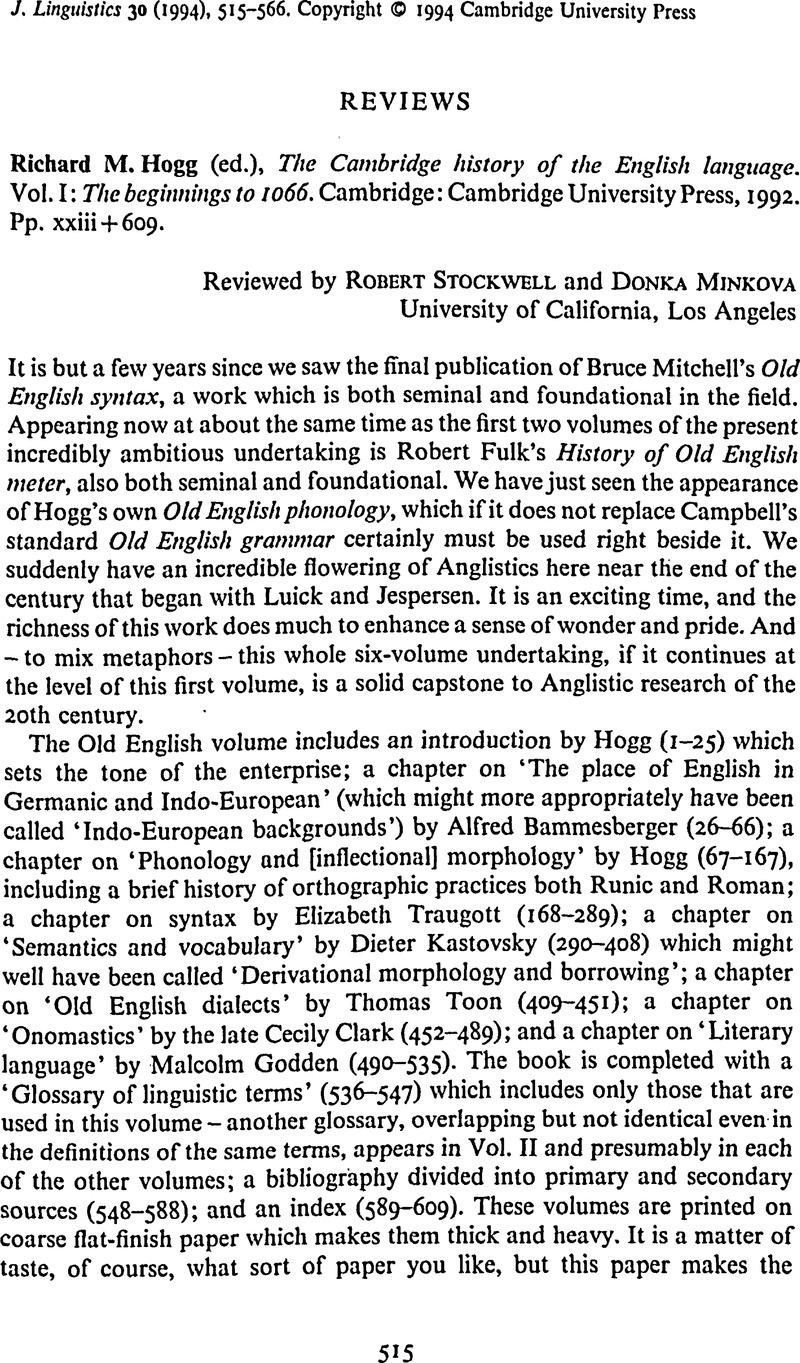Crossref Citations
This article has been cited by the following publications. This list is generated based on data provided by Crossref.
Minkova, Donka
and
Stockwell, Robert P.
1994.
Norman Blake (ed.), The Cambridge history of the English language: Vol. II, 1066–1476. Cambridge: Cambridge University Press, 1992. Pp. xxi + 703..
Journal of Linguistics,
Vol. 30,
Issue. 2,
p.
528.



